In: Female Artists
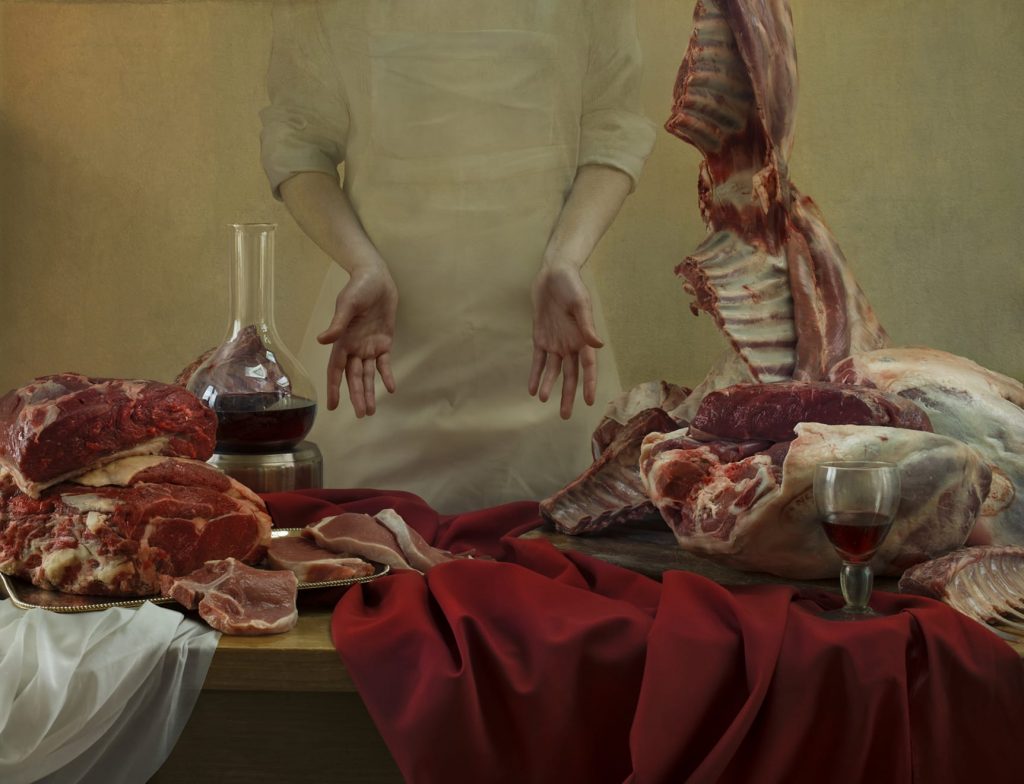
Katerina Belkina | The Dinner, 2016
February 15, 2024Katerina Belkina | The Dinner, 2016 (from the series Repast)
(Photography, Digital Painting)
“God sendeth and giveth both mouth and the meat.”
(Thomas Tusser, 1524 – 1580)
I will admit that there are certain fascinations (or perhaps less charitably or more directly classified) obsessions that ‘feed’ my interests in terms of artworks.
Meat – and how many artists employ flesh as inspiration or subject – is one of them. I offered a previous essay (centered on the fine paintings of Scott Conary) that explored this, but when I was making artworks prior to my exile or migration to Niagara (edit as you will) I often worked with fat, meat, bones and other organic matter, to make works that I described as ‘inappropriately beautiful.’
Sometimes, amidst the cacophony – or idiot choir – of ‘art criticism’ these days, with references pedantic and claiming to be ‘philosophical’ it is good to return to simply a notion of beauty. One of my best teachers, Patrick Traer – a fine artist whose work dealt with these contested, perhaps conflicting, narratives – spoke of this to me years ago, when I was still on the Prairies.
Belkina’s artwork that I share here is gripping, and perhaps inappropriately (to some weaker constitutions) beautiful. She offers some interesting ideas about her motivation and ideas that sometimes intersect with my own subjectivity, but this is an image that is striking and that, frankly, is enough.
Her religious connections are not of particular interest to me : but I must admit that my own religious upbringing (or indoctrination) have sometimes directed my interests, too – and there is a fecundity of potential interpretations that contest or converge that make her work worthy of consideration, whatever your pre existing assumptions (and I include myself in this statement).
From her site :
“Repast is an allegory of life cycles. Cyclicity perfectly characterizes humanity and our perception of time.
The Morning (childhood) means acquisition and accumulation. At the beginning of life we receive a certain foundation and potency both from our family and from the society in which we live. We learn to recognize the beauty around us and to feel it — we use all this for the rest of our lives. Even if “breakfast” is sparse in physical reality, it is often filled to the brim with intangible treasures such as love, fantasy, discoveries, strong impressions and first disappointments. In “breakfast” the abundance of dairy products is symbolic. The milk is associated with purity and virginity. The memories of breast milk are still fresh. The fullness you see is an exaggeration. The yellow of orange juice symbolizes concentrated emotions, the taste of life, sincere joy, and the energy of children. A lemon or an orange signifies the unquenchable thirst for action, knowledge, and discovery.
The Day (youth, adulthood) — creation, destruction, giving and taking. The flesh (the fruit) and the colour red are symbols of life and sacrifice. Youth is a period of expending — some build, others destroy. “Time to throw stones and gather stones” — there is a balance in this. We all make sacrifices and give everything at this point in our lives. More or less.
The Evening (age, completion) — contemplation, silence. A meditative part. Scarcity of dinner does not mean scarcity of life, or poverty. The table is set for one person. We come alone to the end of our lives, and yet we merge face to face with the divine in this world. It is a time of transition where all matter fades and loses all meaning. I believe our spirit reaches its peak here and we either accept or reject this transition completely. The set of elements depicted is simple: the fish is the symbol of Christ, the potato (the second bread) — the body losing the spirit (steam), the black tea — the drink of the gods and sages, not for simple thirst quenching, but for contemplation. The position of the hands in the triptych refers to Leonardo da Vinci’s “Last Supper”, in which the master emphasized the hands. Here they recede into the background and invite the viewer into this or that phase of life — past or future.”
Katerina Belkina was born in Samara in the southeast of European Russia : her mother was also a visual artist. Belkina attended the school for Photography of Michael Musorin in Samara and she’s exhibited her work in Moscow and Paris. In 2007 Katerina Belkina was nominated for the prestigious Kandinsky Prize (comparable to the British Turner Prize) in Moscow, and she has also been awarded the Hasselblad Masters Prize. She lives and works in Werder (Havel) near Berlin.
More of her work can be enjoyed here and here.
~ Bart Gazzola
Read More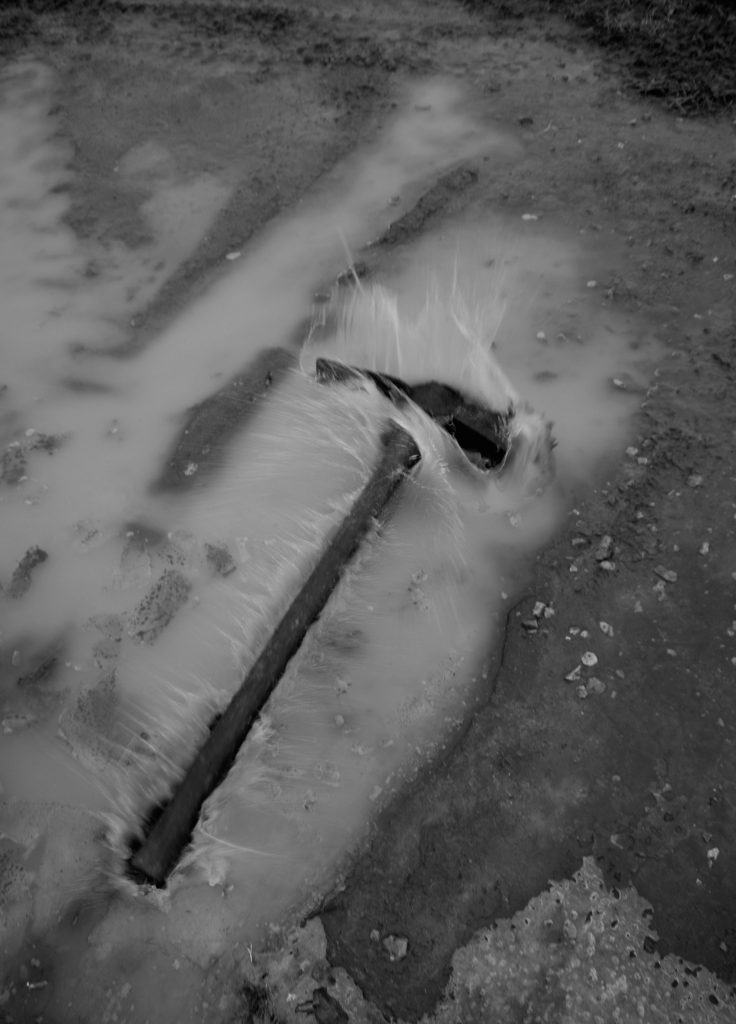
Adrianna Ault & Raymond Meeks | Ohio Farm Auction
December 11, 2023Adrianna Ault & Raymond Meeks | Ohio Farm Auction
The crops we grew last summer weren’t enough to pay the loans
Couldn’t buy the seed to plant this spring and the Farmers’ Bank foreclosed
Called my old friend Schepman up, to auction off the land
He said, “John it’s just my job and I hope you understand”
Hey, calling it your job ol’ hoss, sure don’t make it right
But if you want me to I’ll say a prayer for your soul tonight
(John Mellencamp, Rain on the Scarecrow)
One generation passeth away, and another generation cometh: but the earth abideth for ever. (Ecclesiastes 1:4, KJV)
There’s a memento mori quality to the scenes from the Ohio Farm Auction series. This may be an interpretation informed by several of the other bodies of work by Adrianna Ault (such as her series Levee which led me to the collaborative Ohio Farm Auction series), that are permeated by a sense of mortality and remembrance, as expressed in her writings about those images.
Though these images are not completely empty of people, the more striking and – unsurprisingly – starker moments that stay with you have no figures within them, though their absence and implication is powerful. The line I quote above, in response to this work came to mind immediately upon seeing the Township photos. Mellencamp’s album was a series of laments for a way of life lost (perhaps taken away or relinquished), as the world moves on (this last being closest, I feel, to the artists’ position here, with a gentle consideration of family history and generational change. Township reads more about releasing than resistance..)
The biblical quote came to me in a more indirect manner. Having recently read George Stewart’s post apocalyptic book Earth Abides (from 1949, so it ages poorly, in many ways – or this is perhaps a corolary to the ‘change’ implicit in the story presented in Ohio Farm Auction, of a time to gather and a time to discard), the ideas, again, of what is lost and our – humanity’s – place in the larger narrative of the earth was a further consideration when I engaged with these photographs…
The words of Adrianna Ault, speaking of this collaboration with Meeks (one of a number they’ve done) :
“These photographs were taken one February day in a rural township in Ohio. My partner, Raymond Meeks, and I photographed and watched as all the possessions of my family’s farm was auctioned to the highest bidder. Photographing served as a testimony to the life and work of over one hundred years of farming in my family. This work was published as a collaboration with Tim Carpenter and Brad Zellar in the book Township published by TIS books and later nominated for the 2018 Kassel Fotobookfestival Award.”
That collection of words and photographs has been described as a “careful deliberation on transience and the ultimate meaning of a way of life in the Midwest.”
More of Ault’s work can be seen here and more of Meek’s work can be seen here.
~ Bart Gazzola
Read More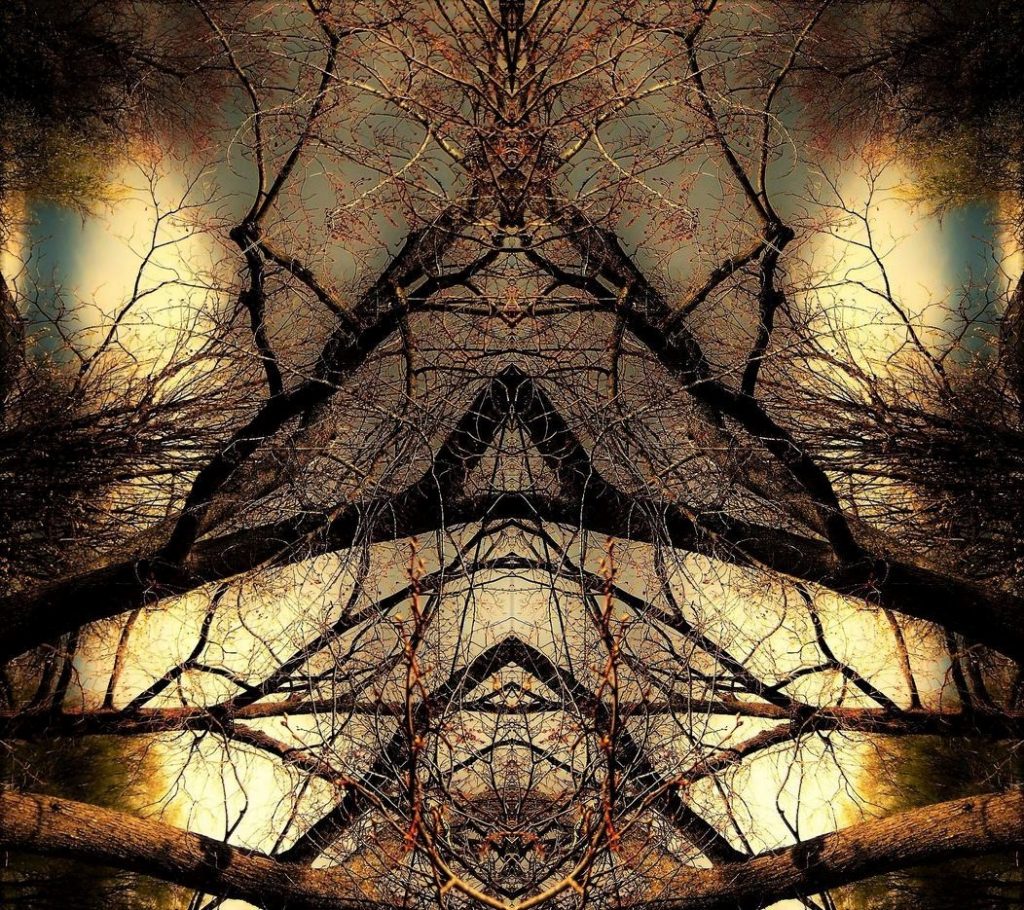
Diane Beard | Walking from the Darkness to the Light
October 2, 2023Diane Beard | Walking from the Darkness to the Light
“…life is brief and lovely, not long and foolish, that it is strange and beautiful, yeah as a dream, then so let it be, if it must be tears, if tears alone may serve…”
(Jack Kerouac)
Diane Beard is a photographer who takes pictures of her immediate community of Welland (usually while walking the streets of the city), often manipulating the images digitally to have a surreal or abstracted quality.
She was one of the featured artists in the Welland Creatives Network’ 13 on the 13th exhibition at the Welland Historical Museum in 2022. We became acquainted during COVID, when the artists’ group I facilitate – the 5 x 2 Visual Conversations – began to ‘meet’ online, and Beard was an enthusiastic and impressive participant.
Diane is the widow of artist Ross Beard (1953 – 2019) who was arguably the most significant visual artist in the history of the city of Welland. Frankly, I prefer to say ‘is’ as a recent exhibition of his work indicated that he lives on in his artwork and the joy many find within it.
His passing was – is – a fracture in her life, and part of her response has been the many images she’s produced and shared, both online and in the Niagara visual arts community.
From a recent exhibition – which was titled Walking from the Darkness to the Light – in St. Catharines : “Having been surrounded by Ross’s awe-inspiring art, sharing the same love of nature and appreciation for the Niagara area, driven by grief combined with a loss of identity after Ross’s passing, yet with no formal training, Diane began taking photographs as means to express her feelings and emotions. Diane’s sense of color and form transcends a simple mundane scene into something abstract and at times unrecognizable mimicking the profound change in her life.”
I’ve been lucky enough to talk with Diane often about her work. The contrast between a scene you recognize and something completely alien is one of the aspects of her work that’s alluring. Beard has an innate sense of colour, composition and a vibrancy in her scenes. This vivacity is an appropriate challenge to the fact that these images are, at their genesis, about loss and mourning and how to move through that….
Beard shares images regularly on social media, and is a prolific artist. I’ve only shared a small part of her body of work, and more can be enjoyed here and here.
~ Bart Gazzola
Read More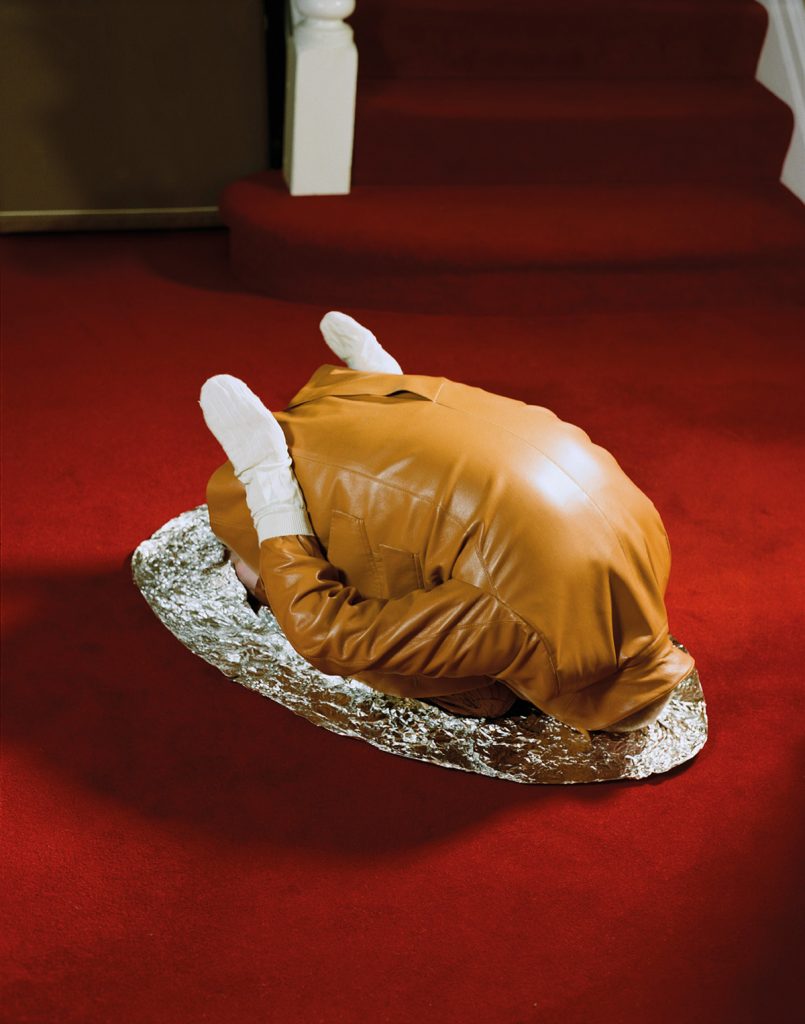
Annie Collinge | Table For One | 2020
August 25, 2023Annie Collinge | Table For One | 2020
With styling and art direction by James Theseus Buck and Luke Brooks of Rottingdean Bazaar, the Table For One series was created for Luncheon Magazine, featuring the model Tin Gao.
There are a number of places to stand (or crouch, on your knees with your head tucked under, like the resting chicken ‘downward dog’ work by Collinge) in considering Table For One.
Some are more light-hearted (when I first encountered Collinge’s performative scenes, I was having the type of day where staying at home in a banana bag or sitting stoically as a snug, solitary tomato was a comforting concept. Table For One might mean being grateful to be left alone, that day). Other responses may be darker : perhaps these are incongruously bright, vibrant metaphors for loneliness and separation. Eating alone at a table for one is interpolated as isolation – and assumed to be by reluctance not preference – which feeds (sorry) into the history of how eating with others and communal meals are lauded as linchpins of social structure. This is – of course – debatable, as it has a rank stench of nostalgia, like those who lament the myth of ‘family dinner.’
I offer this as someone who often goes to movies alone, or eats in restaurants alone, but have been told I’m ‘extroverted’ in other social interactions.
When considering art, I often cite what Jeanne Randolph describes as the ‘amenable object’ : it’s a ‘vessel’ that we pour our own experiences into, and thus construct its meaning in collaboration with the artist. Fashion falls within this, and is also a manifestation of art and social history : its a history we wear and perform. As with art history, it is sometimes subversive, sometimes explicit. Table For One exists within that space.
“Puppetry, dolls and larger-than-life costumes populate the images of London-based photographer Annie Collinge. Visual trickery abounds, as if Alice had just stumbled upon a magic potion in Wonderland, with scale (the very large and the very small) frequently distorted. The human body becomes a foil to its surroundings, offsetting imaginative surroundings that conjure the escapist storybooks of childhood. A head appears amidst a mushroom patch, or else a gloved hand clutches at a disembodied head. Like the best fairytales, these images carry as much menace as they do whimsy.” That quote is from an interview with Collinge : more of that conversation can be read here.
More of Collinge’s artwork (sometimes collaborative, sometimes solo) can be seen here and here.
~ Bart Gazzola
Read More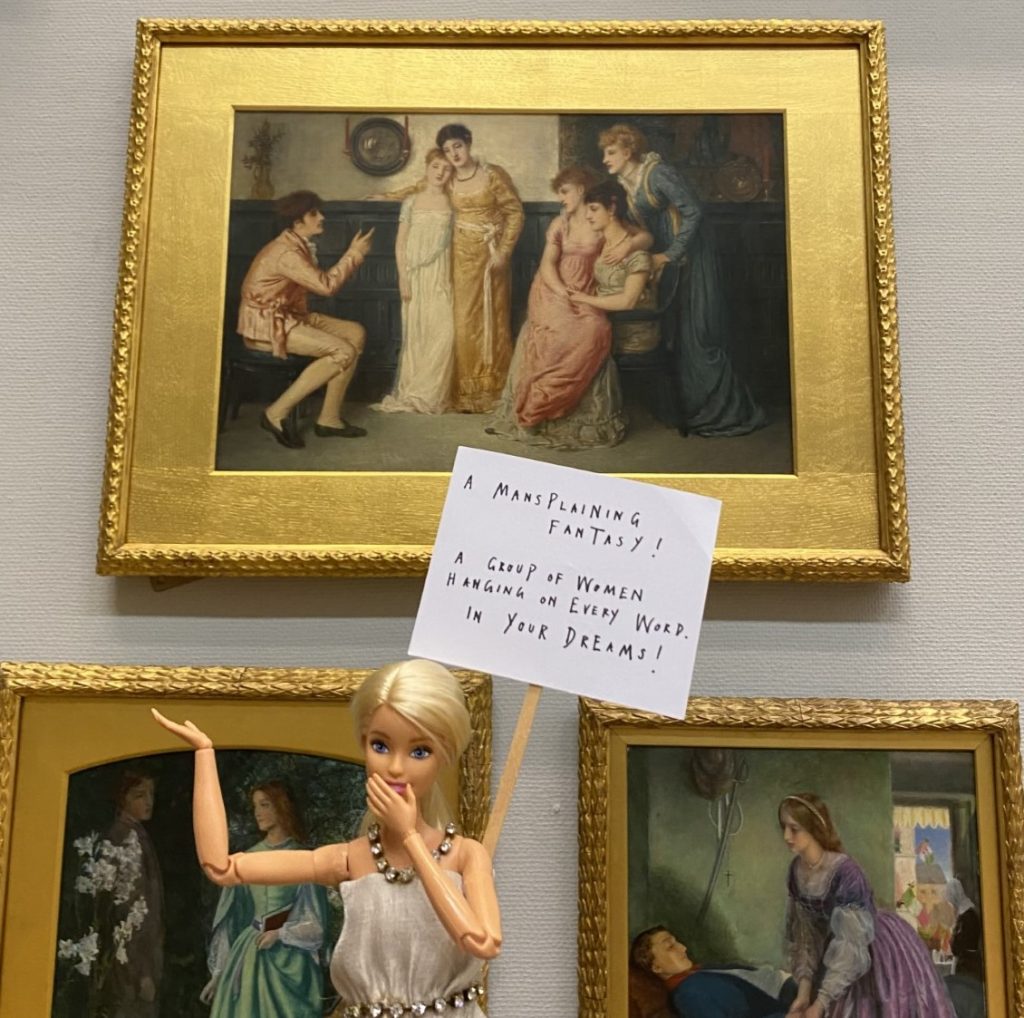
ArtActivistBarbie | Dr Sarah Williamson
August 11, 2023ArtActivistBarbie | Dr Sarah Williamson
Many years ago, when I was still working in art galleries, I was intimately involved with the first full ‘inventory’ of the Kenderdine Gallery’s art collection (now the College Gallery, at the University of Saskatchewan). This task involved documentation both visual and written, from shooting slides (yes, I am that old) and creating or augmenting artist and artwork files.
At one point, a coworker and I realized that there were more works by unknown artists than there were from female artists, let alone ‘contemporary’ ones : but I also remember an acquisitions meeting where yet another passel of karaoke modernist paintings by a second rate male artist were being considered for purchase (despite, as I pointed out, one of the people on the committee was the son in law of said artist, and we already had many works by this artist, and many more lesser imitations in this derivative genre. Unsurprisingly, I was asked to leave the meeting…).
I can’t help but feel nobody would be able to make ArtActivistBarbie leave, in a similar situation (yes, I am smiling as I type that). A performative persona of Dr Sarah Williamson, it feels appropriate to speak of ArtActivistBarbie as a person, unto herself, in this essay.
If you’re still swimming in that cesspool known as Twitter – sorry, ahem, ‘X’ – then perhaps you are already familiar with ArtActivistBarbie (@BarbieReports) who “has a finely tuned eye when it comes to calling out gender inequality in the arts, and she is not afraid of making a scene. Her provocative wit and fabulous wardrobe lend themselves to staged interventions, predominantly in art galleries and museums. Posing with her tiny, pithy placards, ArtActivistBarbie is photographed gently mocking or drawing attention to problematic exhibits and the images are shared with millions of Twitter users. She also challenges the biases inherent in so many curatorial labels and statements.
ArtActivistBarbie seeks to change the practices of these institutions, the bulk of whose collections have historically been commissioned and produced by men, representing many centuries of male power and privilege. Over 94% of artworks in publicly funded galleries [in the UK] are by white men and many objectify and demean women and girls. Making visible the lives and experiences of women and minority ethnic groups is vital for a more just and equal society.” (from here)
The origin of ArtActivistBarbie is thus : “The woman behind the project is Sarah Williamson, a senior lecturer in education and professional development at the University of Huddersfield. A few years ago, she was trying to find a way to engage her students with social-justice issues and feminist ideas, especially the problematic way women are portrayed in art. She wondered if Barbie, that plastic idealised woman, could become a vehicle for playful commentary on the “patriarchal palaces of painting”. Soon Williamson was gathering a doll army, clothing it in pieces handmade by her feminist mother in the 1970s, with new additions created by her sister. She handed each of her students a Barbie doll and a blank placard on a lollipop stick, then set them loose in Huddersfield Art Gallery.
The resulting mini-protest signs stopped visitors in their tracks, and the photographs of Barbie’s protests drew plenty of notice back in Williamson’s office: “I realised I had something which attracted everyone’s attention and catalysed conversations about how women are portrayed and represented not only in art, but society in general.”” (from The Guardian)
It’s also necessary to consider how “museums are somewhat newly self-reflexive about their role in shaping the culture and the discourse, and are working hard to stay relevant and expand the canon—and to grow their audiences.” (That’s from a recent article in ArtNews that appropriately decries the slipshod ‘critique’ offered by the Brooklyn Museum’s exhibition Pablo – matic – and although ArtActivistBarbie seems to ‘shoot from the hip’, her aim is more accurate, and considered, in the larger discourse of whom and what cultural institutions serve – and don’t….)
Much more about ArtActivistBarbie’s caustic yet comedic commentary (comedy, it has been said, is just rage in fancy dress, and Barbie has no shortage of snazzy outfits) can be enjoyed here. There are a number of interviews with Dr Williamson that are as educational as they are engaging.
~ Bart Gazzola
Read More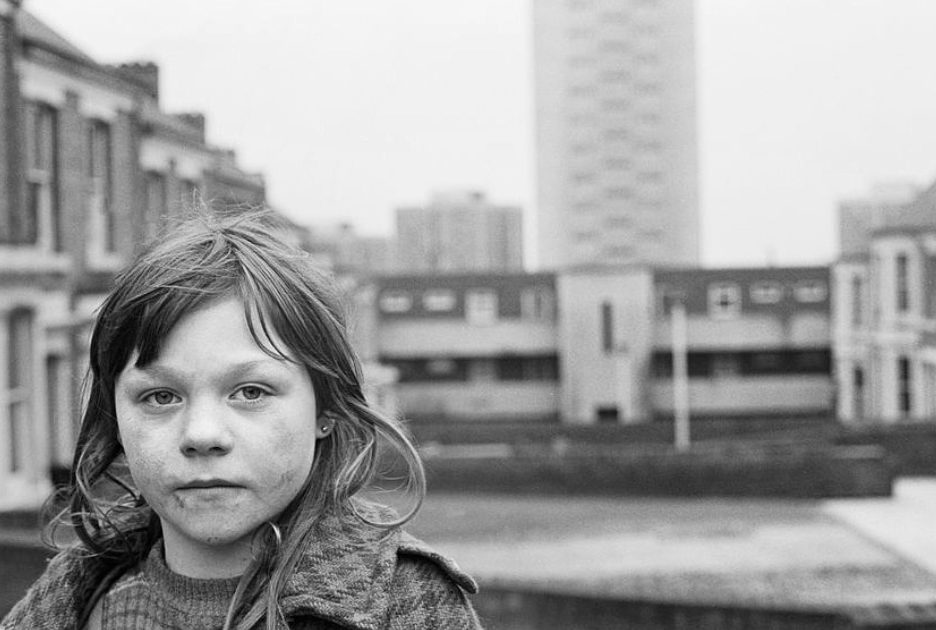
Tish Murtha | Elswick Kids | 1978
August 4, 2023Tish Murtha | Elswick Kids | 1978
All we wanted was everything. All we ever got was coal.
(Bauhaus, from the album The Sky’s Gone Out, 1982)
Patricia Anne “Tish” Murtha (1956 – 2013) was a British photographer best known for her images of working class life in Newcastle upon Tyne and the North East of England. Murtha’s work is a raw documentation of these communities – and often youth within these social groups – at a time when British Prime Minister Margaret Thatcher waged war on her own citizens, embracing a neo – liberal cruelty that is like a virus whose symptoms can be still seen in contemporary post Brexit Britain.
The images captured by Murtha evoke notions of a ‘third world’ country, with the scenes of desolate and despairing youth amidst a wasteland that – being shot in black and white – emit a hopelessness that reaches across the decades. Or perhaps it is simply combining with the contemporary desperation among working class communities in these places now.
From here : “In 1976, aged 20, Tish left home to study at the famous School of Documentary Photography at The University of Wales, Newport under the guidance of Magnum member David Hurn.
She took many photos in Newport, including The former Prime Minister James Callaghan opening up a new stretch of the M4, as well as documenting Aubrey Hames’ year as Mayor of Newport in the Queens Silver Jubilee year (1977-1978). Tish also worked with the South Wales Argus during this time and photographed the local election campaigns.
When she returned to Newcastle, she began to document the lives of her friends and family and numerous other projects.
Tish’s work was often concerned with the documentation of marginalized communities from the inside. She invested her time building relationships of trust, which allowed her access to different parts of the communities that she photographed. Her approach was informal, generating an understanding of what she was doing by giving copies of her photos to the people in them. The young people she photographed as part of the Youth Unemployment and Juvenile Jazz Band exhibitions showed how tenacious, resourceful, clever and resilient they were (and had to be) – Tish was always fiercely protective of them.
She felt she had an obligation to the people and problems within her local environment, and that documentary photography could highlight and challenge the social disadvantages that she herself had suffered.”
Three books of her photographs have been published posthumously : these are Youth Unemployment (2017), Elswick Kids (2018) and Juvenile Jazz Bands (2020).
More of Tish Murtha’s work and her life (as her daughter is maintaining her archive and ensuring her mother’s work is given its appropriate place in terms of history and art) can be seen here.
~ Bart Gazzola
Read More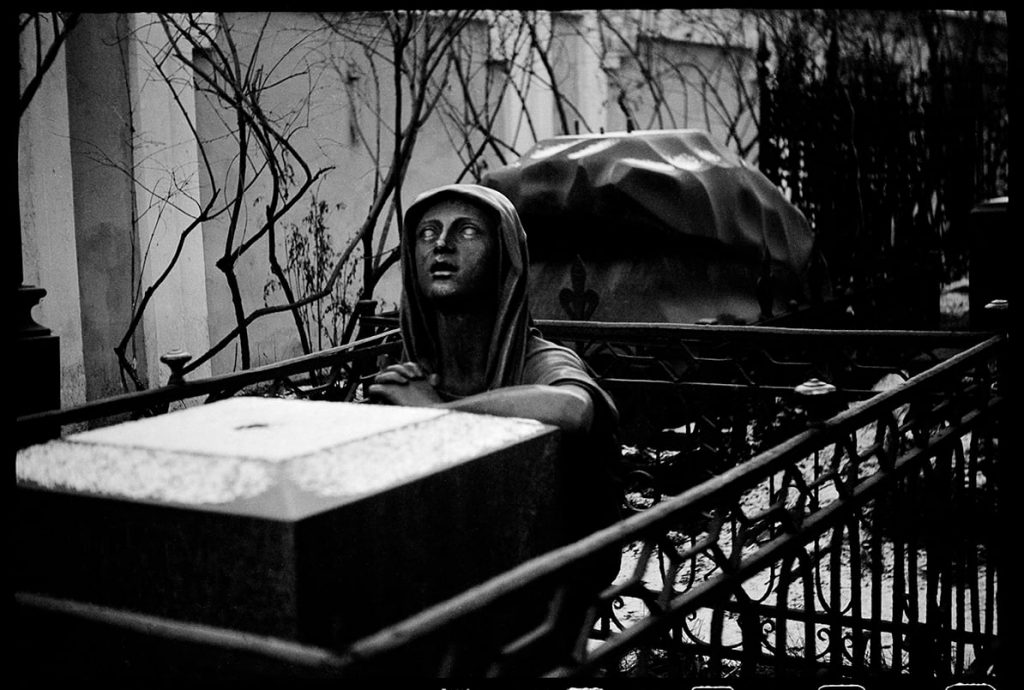
Saint Alexander Nevsky Monastery, Leningrad, USSR | Masha Ivashintsova |1977
July 21, 2023Saint Alexander Nevsky Monastery, Leningrad, USSR | Masha Ivashintsova | 1977
I was not born
to amuse the
Tsars.
— Alexander Pushkin
I loved without memory: is that not an epigraph to the book, which does not exist? I never had a memory for myself, but always for others.
— Masha Ivashintsova
Masha Ivashintsova has been described as a ‘Russian Vivian Maier‘ as she took so many photographs – creating a world, in a way, of her city – in her lifetime but most of them have only been shared since her death. Her eye for contemporary life under the Soviet regime – especially in St. Petersburg later Petrograd later Leningrad then again St. Petersburg (the shift in name and what that entails in the socio political sphere is a good place to stand, when considering Ivashintsova’s photographs) – was an honest and personal portrait of her life and times. One might argue that the veracity of these experiences captured with her lens were – are – so honest and powerful that we can understand why she held them to herself for so long. Her own personal history was also painful, and that was surely a factor, too.
Or, perhaps as I allude to with the quote from Pushkin, autocratic, authoritarian societies prefer facile propaganda and punish uncomfortable truths….
Ivashintsova (1942 − 2000) was a photographer based in Saint – Petersburg (then Leningrad, in the USSR) “who was heavily engaged in the Leningrad poetic and photography underground movement of the 1960−80s. Masha photographed prolifically throughout most of her life, but she hoarded her photo-films in the attic and rarely developed them. Only when her daughter Asya found some 30,000 negatives in their attic in 2017 did Masha’s works become public.”(from here)
“Struggling with life under Communism, by the mid-1980s Masha was committed to a mental hospital against her will, as a way to get her in line with the USSR’s philosophies. Working throughout her life as a theater critic, librarian, cloakroom attendant, design engineer, elevator mechanic, and security guard/riflewoman, she was a chameleon, always camouflaging her inner artist. Only through her diaries and photographs was she able to show her true self.”
A fine article – and interview – with her daughter Asya Ivashintsova-Melkumyan can be enjoyed here. A site devoted to Ivashintsova’s amazing archive can be seen here : as well, there is a social media page that shares her work at regular intervals here.
~ Bart Gazzola
Read More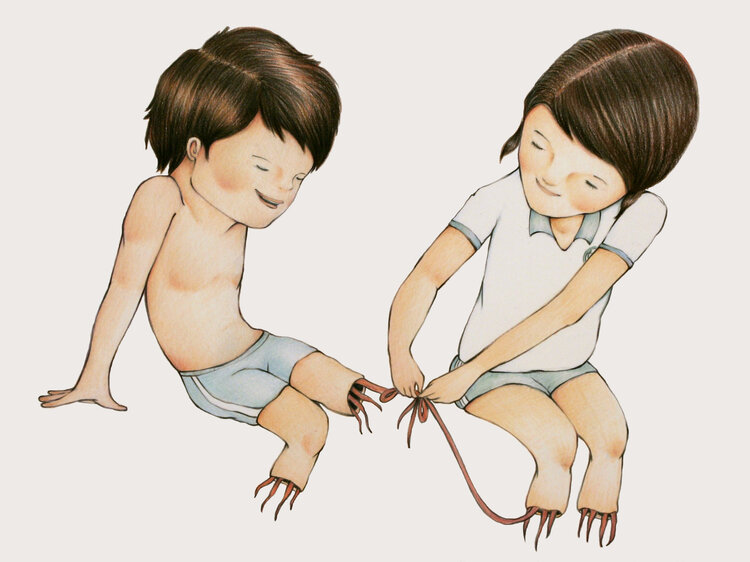
Yuka Yamaguchi | Inseparable | 2006
July 14, 2023Yuka Yamaguchi | Inseparable [離れられない] | 2006
If there is love, smallpox scars are as pretty as dimples.
(Japanese proverb)
There is a simple elegance to Yagmaguchi’s work that sometimes belies the visceral content. I was lucky enough to experience her work in person, in an exhibition years ago that purported to showcase contemporary Saskatchewan artists. There were too many artists in the show, some of middling ‘quality’, but Yamaguchi’s unique style and subject matter was a high point of that exhibition.
Her use of very simple tools is perfectly matched to the illustrative nature of her images, which are as much about storytelling as a disciplined but playful aesthetic.
The title of this work can also be translated from Japanese as ‘Can’t Leave’ : but I don’t interpret that in a negative context, and still read this work as a more bodily or corporeal valentine’s card. The rawness is just another way of depicting the intensity of the feelings of being ‘inseparable.’
Yuka Yamaguchi is a self-taught visual artist from Kobe, Japan who has lived in Saskatoon since 2005.
Colour pencils and paper are her preferred medium as these tools allow for strong colors even though they are fragile and delicate. Yamaguchi “draws intuitively as she sees an image appear on paper and keeps adding images like a puzzle.”
More of Yuka Yamaguchi’s artwork can be seen here.
~ Bart Gazzola
Read More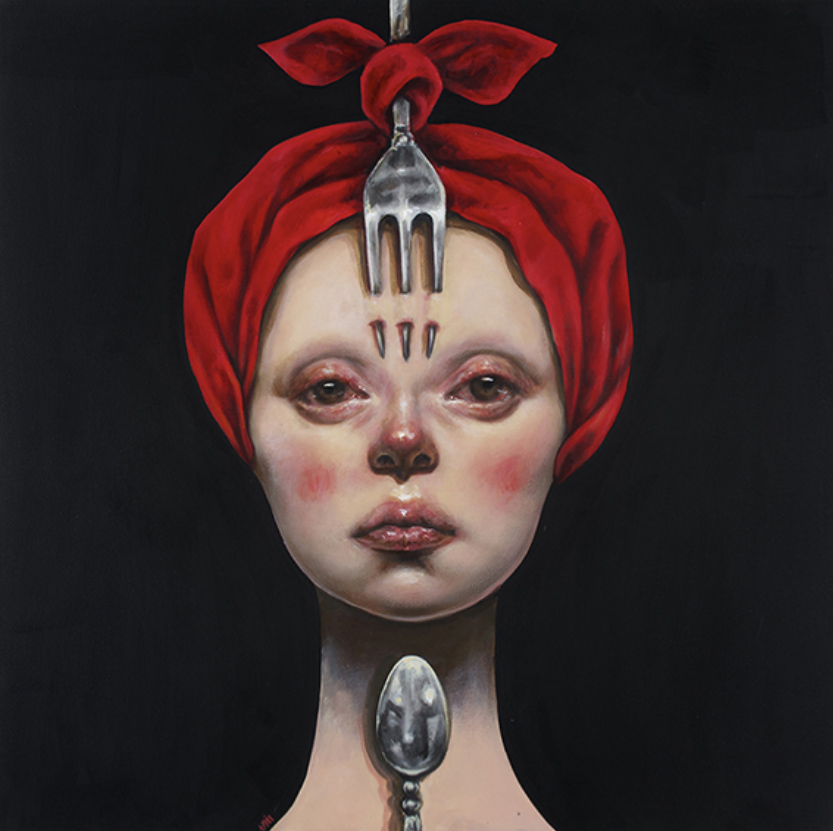
Afarin Sajedi | Chef Offer | 2013 – 2014
July 6, 2023Afarin Sajedi | Chef Offer | 2013 – 2014
“You will eat less than you desire and more than you deserve.”
(from The Menu, 2022)
The works in Sajedi’s Chef Offer series have evocative if direct names (I prefer to say ‘names’ over artwork titles in deference to her figures, with their poise and power).
These includeThe Soldier (2013), Like A Queen (2013) and Like A King (2013). The header image – breaking this pattern – is simply Fork (2013). The latter seems less stoic and more a warning to the viewer meeting her gaze….
Even the superficially absurd head pieces that her women wear are less amusing than unsettling in their elaborate nature: the pale faces, flushes on the cheeks and uncanny presence of the women in Chef Offer inspire anxiety more than amusement…
I recently rewatched The Menu, a horror film about the pretentious restaurant ‘scene’ that is rife with dark humour. Many of the harsh if unflinching ideas in The Menu are present in another horror film that dryly mocks the art world : Velvet Buzzsaw (2019). With both of these films I have rarely laughed so hard – and appropriately – at horror. Both of these films came to mind in considering Sajedi’s Chef Offer series.
The women that Sajedi ‘offers’ us seem to have an affinity to the Menu character Elsa, whose inscrutable, amused hint of a smile portends nothing but appropriate suffering for the ‘diners.’ It’s Elsa’s words I opened this essay with : and the exchanges of dialogue in The Menu offers a place to stand and consider Afarin Sajedi’s women in Chef Offer.
An example (and try to read this without picturing one of Sajedi’s women speaking as Chef Slowik, here):
Chef Slowik: So, the question is, do you wanna die with those who give, or with those who take?
Margot: But I die either way? It’s arbitrary.
Chef Slowik: No, it’s not arbitrary. Nothing in this kitchen is arbitrary. Please pick. These decisions are important, and, uh, our menu is strictly timed. In 15 minutes, I’ll take a break between courses, and that is how long you have to decide. It’s our side or theirs. In the meantime, please return to your seat. The next dish is exquisite.
Afarin Sajedi was born in 1979 in Shiraz and relocated to Tehran in Iran to study at Tehran Azad University where she earned a degree in graphic design. Afarin’s paintings are marked by a melding of technique and creativity, and often powerful in their presentation. Her subjects include theatrical characters, sometimes with overtly colourful, almost clownish faces, that are inspired by Japanese theater in tandem with symbols of western religious art that contrast and collide with the contemporary world. Afarin’s “characters are usually royal, proud, and silent with a deep look.” (from her site)
More of her work can be seen here and her IG is here.
~ Bart Gazzola
Read More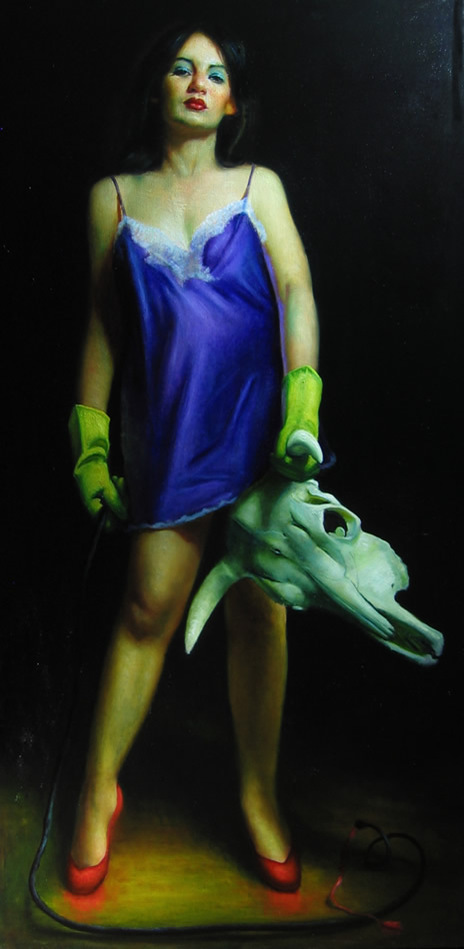
Rose Freymuth-Frazier | Woman Fighting Bull | 2007
June 30, 2023Rose Freymuth-Frazier | Woman Fighting Bull | 2007
I am tempted to simply comment that this is my offering – my criticism, in a visual manner – of the online debate around the exhibition at the Brooklyn Museum that purports to explore the misogyny of Picasso and what might be the inflation of his genius in the Western art canon. If you’re unfamiliar with what I’m referring to by this comment, this link may help.
There is a carnivalesque aspect – and attitude, with her figures – in much of Freymuth-Frazier’s artwork. Recurring motifs make her paintings like a story, and the gazes and stances have a cinematic quality. Humour – often dark, or with an amusing caustic edge – is also present in her rendered scenes.
I enjoy the elements in this that conflict and conflate with the title : the yellow cleaning gloves (when I see these, I can almost smell the rubber of them), the rich red heels that seem almost to bleed colour onto the floor beneath them, the fine negligee matching the eye shadow, and all offset by the ‘trophy’ of the bull’s skull gripped in a cavalier and triumphant manner. If some of Artemisia Gentileschi‘s tableau of the (appropriate, perhaps) beheading of outrageous men comes to mind, that is only fitting.
Freymuth-Frazier’s woman looks as though she just dealt with a situation that though not her fault became her responsibility and will brook no complaints – or any of your ‘bull’, if I may engage in a pun. It’s a look familiar to us from some of the women in Romina Ressia‘s metaphorical portraits. Less flippantly, Freymouth-Frazier’s figures are the children of Paula Rego‘s characters, too : sometimes presenting uncomfortable but unapologetic experiences, direct and engaging in formal and conceptual ways. There’s a description of Rego’s work that applies very well to Freymouth-Frazier’s too : “Her paintings are a cryptic glimpse into an intimate world of personal tragedy, perverse fantasies and awkward truths.”
Rose Freymuth-Frazier has studied at the Art Students League of New York and the New York Academy of Art.
From her site :
“Rose’s mother and grandmother were both artists. Her work draws from a deep connection to the women who came before her as well as German art and culture passed down through her German Jewish refugee family, particularly that which was labeled as “degenerate” art. Her large-scale figurative oil paintings draw on a range of sources from intimate moments with loved ones and her Persian cat, to the detachment of pinup and soft porn, stock photography, and advertisements. Through an exploration of the subconscious, she depicts themes both personal and universal.
Her work has been exhibited internationally, and is included in private collections around the world, including The Bennett Collection of Women Realist, Collection of Gillian Flynn, Collection of Milane Duncan Frantz and the Collection of Michele Peterson.”
Her site and much more of her fine work can be enjoyed here and her IG is here.
~ Bart Gazzola
Read More
Recent Comments